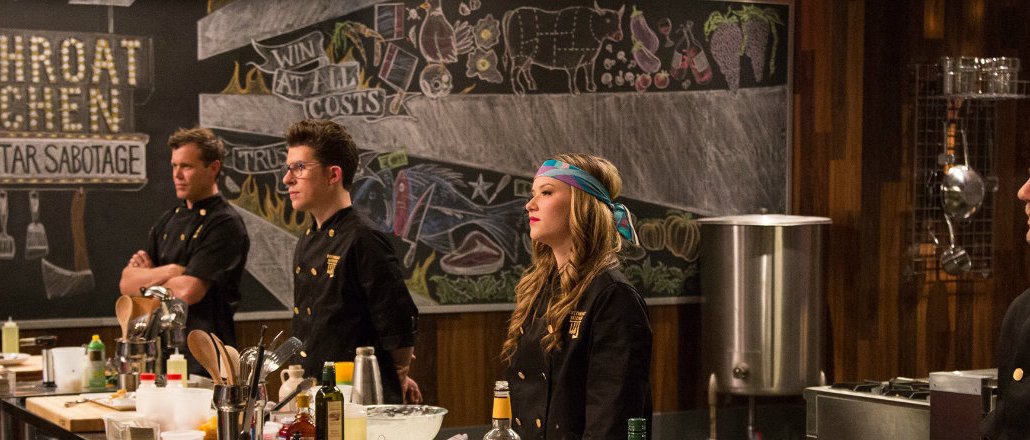
Food Network owner Scripps Networks Interactive knows there are millions of people who are not watching its shows on TV. To meet them where they are spending a lot of time, the company has launched a new division called Scripps Lifestyle Studios, which will create content for social platforms as well as websites and mobile apps not owned by Scripps.
“We constantly think about how people are going to engage with us,” said Vikki Neil, svp and gm of Scripps Lifestyle Studios. “The next generation of viewers, we hope they watch Food Network every night, but we don’t know if they do.”
People are certainly watching food content on Facebook. In October, the top three video pages on Facebook — Tasty (BuzzFeed), TipHero and BuzzFeed Food — were in the food category, generating 1.2 billion, 743 million and 529 million views, respectively, according to Tubular Labs. The main Facebook page for Tastemade, a digital food network that Scripps is an investor in, did 195 million views that month.
Food Network’s Facebook page, meanwhile, only had 3 million views in October, according to Tubular.
Up until now, Food Network has been left in the dust by the digital publishers, which is why the Lifestyle Studios team is armed with more than 100 staffers dedicated to creating content for Facebook and other social and digital platforms.
“The need to publish daily content was also an impetus behind creating the studio,” said Neil. “We are trying to create the right content for the right platform at the right time. It’s why we’re leveraging the resources that we have, to tell our audience that they can expect different things based on the platform they’re on.”
The unit oversees two production hubs, the Food Network test kitchen in New York City and the HGTV Studio in Knoxville, and will create content for all Scripps TV brands. At the moment, the division spends roughly 20 percent of its time thinking about and making social content, according to Neil. That percentage will grow as daily content becomes a habit.
The Food Network kitchen in New York will serve as the primary hub for creating the daily social content. The studio is also in charge of Food Network’s channel on Snapchat Discover.
Take, for instance, one of the studio’s first social content projects: an all-day takeover of the Food Network Discover channel on December 13, with chef Alton Brown giving fans a behind-the-scenes look into the Food Network show “Cutthroat Kitchen.” (Neil did not disclose how the Food Network Discover channel is doing overall, except to say daily viewership has been “more than anticipated.”)
On Facebook, Scripps held a day-long cookie party using the new Facebook Live feature. Five videos on the Food Network and HGTV Facebook pages have generated more than 947,000 views since December 11. In the first half hour of going live on Facebook, Scripps was seeing an average of 14,000 live viewers.
Scripps will look to do more of these social stunts while working with both its TV talent as well as online personalities in the food, home and travel categories. (The company also owns Travel Channel and HGTV, among other TV channels.)
This social-first approach is a new endeavor for Scripps, which in the past has produced digital video series but mostly as companion fare to TV shows and relegated to its own websites and apps (with some distribution on YouTube).
While Scripps Lifestyle Studios will continue to make this type of content, it also wants to make super-short social videos like an upcoming series on how to quickly make late-night snacks.
A distributed strategy is something many media companies are coming to terms with. It’s easier to go meet viewers where they are versus trying to draw them to your own platform.
“The challenge in this environment is monetization,” said Brad Hunstable, CEO of Ustream. “Are you trying to monetize premium content or are you doing shoulder content to drive awareness and loyalty to other assets, which you’re monetizing in other ways?”
For Scripps, the focus is on audience growth. “We are trying to grow eyeballs,” said Neil. “And today there is a world of opportunity [in social and digital] that didn’t really exist 10 years ago. We have to be where the people are.”
More in Media

What publishers are wishing for this holiday season: End AI scraping and determine AI-powered audience value
Publishers want a fair, structured, regulated AI environment and they also want to define what the next decade of audience metrics looks like.

Media giant Essence launches a marketplace for Black women-led brands
Essence has launched WeLoveUs.shop, a new online marketplace dedicated to Black women-led brands.

In Graphic Detail: The state of AI referral traffic in 2025
The stats reveal a new audience pipeline forming outside of traditional search and social platforms.





